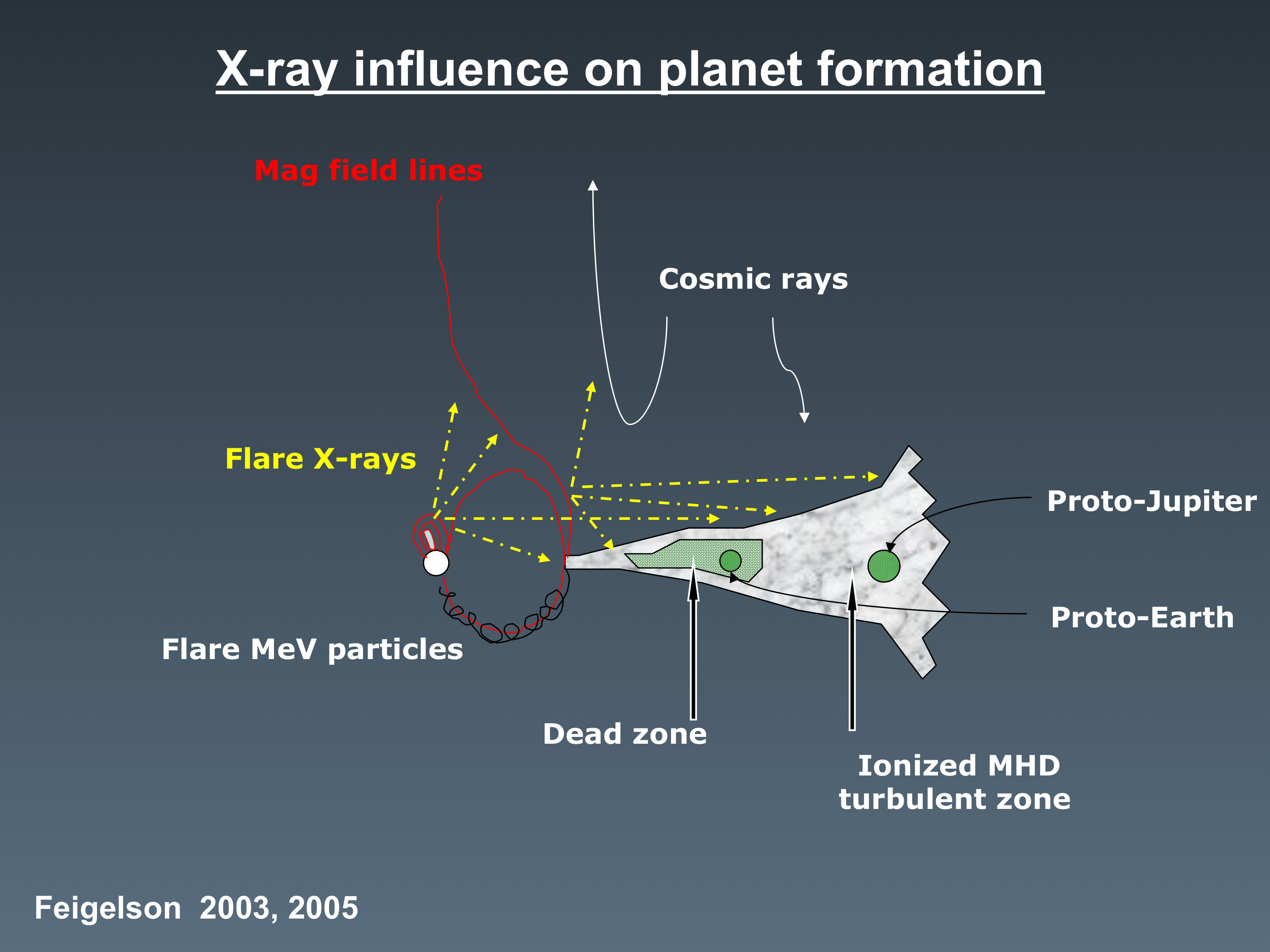 |
Goddard Space
Flight Center NASA > GSFC > Astrophysics Science Division > IXO |
|
Planet FormationHow do high energy processes affect planetary formation and habitability? X-ray illumination is likely a critical regulator in the formation and early evolution of planets in the disk. X-ray observations of host stars reveal high-energy inputs to protoplanetary disks and planetary atmospheres due to stellar winds and violent magnetic flaring. X-ray and infrared spectroscopic studies of protoplanetary disks show that X-ray ionization is present, and theoretical calculations indicate its importance to disk thermodynamics, chemistry and dynamics. IXO will observe protoplanetary systems to produce a time-series of the iron Kα line intensity over the a few hours following a superflare to reveal the disk structure as viewed by the X-ray emitting magnetic loop with ~2 AU spatial resolution. Combined with space-based and ground-based (e.g., Keck mid-infrared adaptive optics, Atacama Large Millimeter Array) data, detailed portraits of these particular X-ray illuminated protoplanetary disks will emerge. 
A protoplanetary disk will be illuminated by flare X-ray from the young star, ionizing the disk and inducing magnetic turbulence. From Feigelson et al. white paper. Click the image for a larger view. |